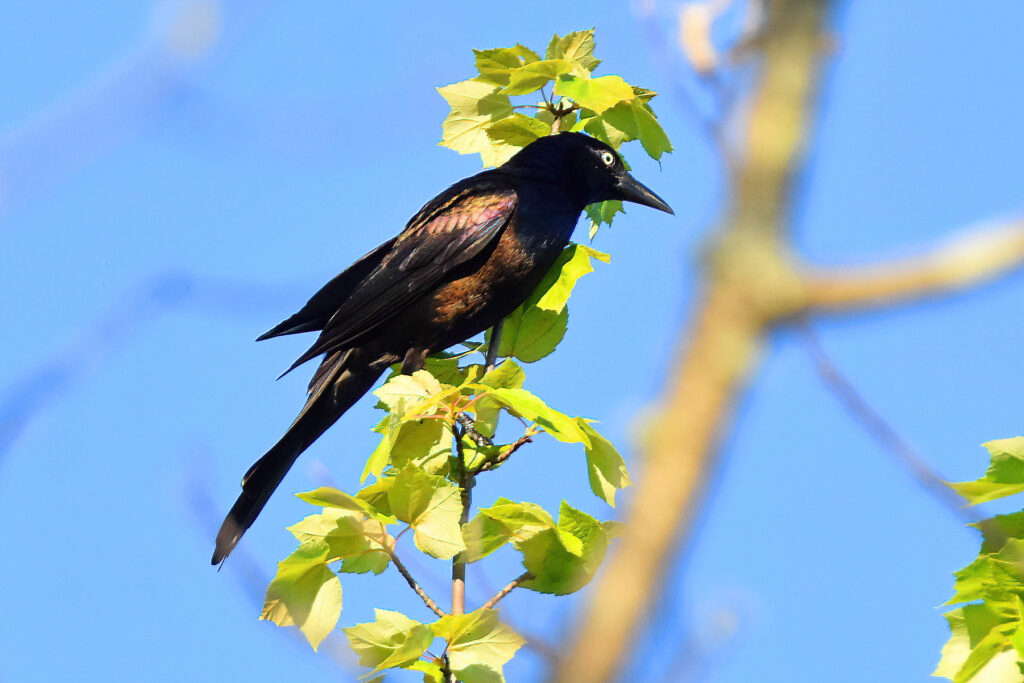
The Common Grackle (Quiscalus quiscula) is a medium-sized bird that belongs to the family Icteridae. It is around 12-13 inches in length and has a wingspan of 14-18 inches. Adult male grackles are larger and heavier than females, weighing around 3-5 ounces, while females weigh around 2-4 ounces. They have a long tail and a thick, sturdy bill, which they use to crack open seeds and forage for insects.

Common Grackles are easily recognizable due to their striking black plumage, iridescent purple and green head feathers, and long, keel-shaped tail. They also have yellow eyes and a slightly curved bill. Female grackles have less iridescence than males and are overall less glossy. Juvenile grackles have brownish plumage and lack the iridescence of adults.
The Common Grackle is a highly migratory bird that breeds throughout much of North America, from southern Canada to central Mexico. During the winter, they migrate to the southern United States, Mexico, and Central America. Their migration patterns are generally triggered by weather conditions and food availability.
Common Grackles are found in a variety of habitats, including urban and suburban areas, farmlands, grasslands, and wetlands. They are omnivorous and feed on a wide variety of food, including insects, fruits, grains, and seeds. They are also known to feed on small animals, such as lizards and mice, and will scavenge on human food waste.
In addition to their striking appearance, Common Grackles are known for their loud, harsh calls, which they use to communicate with each other and to establish their territory. During the breeding season, males will perform an elaborate courtship display, which includes puffing up their feathers and spreading their wings to display their iridescent plumage.

Overall, the Common Grackle is a fascinating bird species that is easily recognized by its striking black plumage, iridescent head feathers, and long, keel-shaped tail. Their highly migratory nature and adaptable feeding habits make them a common sight in a variety of habitats, from urban areas to farmlands and wetlands. Their loud, harsh calls and elaborate courtship displays add to their unique and fascinating behavior.

